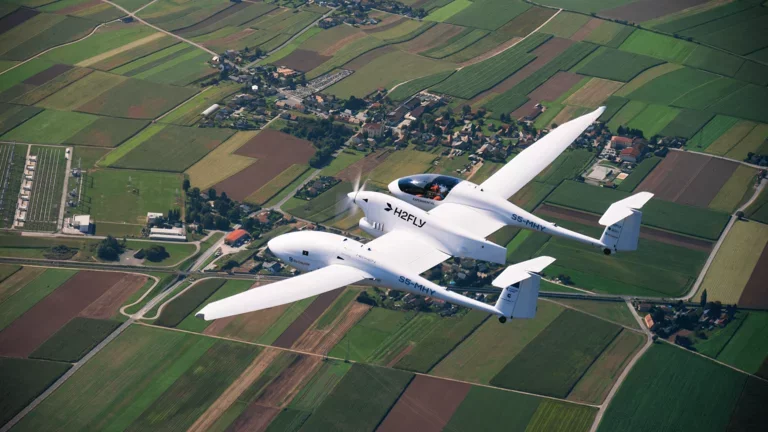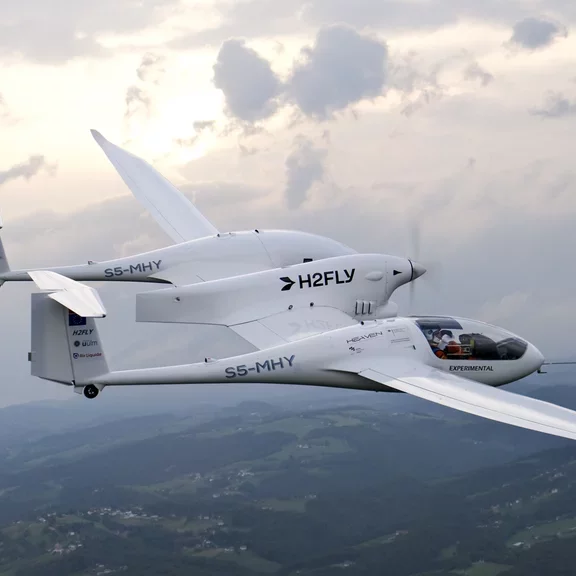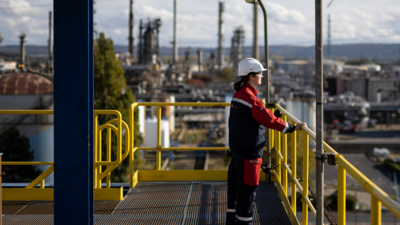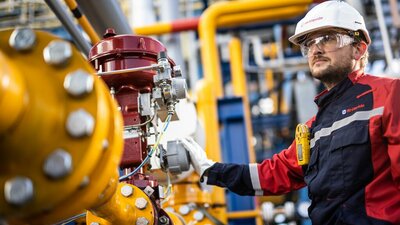World premiere: Air Liquide contributes to the first piloted electric flight powered by liquid hydrogen
Published on November 28, 2023
3 minutes

September 2023 saw the first ever piloted electric flight powered by liquid hydrogen. Working with H2FLY, Air Liquide fitted the HY4 hydrogen-electric demonstrator with a new fuel tank which proved that liquid hydrogen is a great step forward – and upward – for zero-emission aviation.
It's an event that will surely go down in the history of the aviation industry. In September 2023, taking off from Maribor, Slovenia, a small demonstrator called HY4 completed four manned test flights, one lasting three hours, using liquid hydrogen and a fuel tank supplied by Air Liquide.
Originally, the HY4 demonstrator ran on gaseous hydrogen, but trials showed that the high pressures needed for such a demonstrator would make the tank too heavy for use in passenger or freight aircraft. “A liquid hydrogen tank is up to ten times lighter than a high pressure one”, says Pierre Crespi, Director of Innovation, Air Liquide advanced Technologies. So as part of the European project HEAVEN, Air Liquide partnered with H2FLY, a start-up developing hydrogen-electric propulsion systems for aviation, to retrofit their HY4 with a liquid hydrogen tank.
Air Liquide developed a 290-liter liquid hydrogen tank for HY4. Before being fitted on the aircraft, the tank went through thorough vibration and electrical tests to enable its use in flight.
After it was fitted into the HY4, H2FLY and Air Liquide teams actively collaborated to test all of the aircraft’s functionalities, notably full-power motor operation and liquid hydrogen refueling techniques developed by Air Liquide teams to be used at airports.
Before the test, Josef Kallo, Founder and CEO of H2FLY, said “We have a chance to show that electric flight with hydrogen is possible”.
On the d-day, the test flights all performed according to the plan and confirmed that using liquid hydrogen would double the aircraft’s maximum range.
With the aviation industry having committed to net zero emissions by 2050, this success is indeed a very important milestone. Due to their unfavorable power-to-weight ratios, batteries of the kind used in cars are out of the question in aviation. Fuel cells fed by renewable hydrogen are, by far, a better way forward. “This tank is rather small compared to what will be needed in the future for larger commercial aircraft,” cautions Pierre Crespi. Yet it does put the industry on course for market-ready solutions by the mid-2030s, when he expects to see planes with 20 to 100 seats powered by liquid hydrogen in use on regional routes, with full-size airliners to follow around 2050.
In technology terms, the groundwork has now been laid: “We have integrated into that tank all the functions and all the safety procedures that will be needed,” he explains, “and by doing that, we are preparing for the future – contributing to decarbonizing aviation.” And with its expertise across the entire hydrogen value chain, from generation and storage to transport, tankage, and fuelling solutions, Air Liquide is ready to provide the thrust that liquid-hydrogen-powered aviation needs for take-off.
Find out more about the HEAVEN project:



